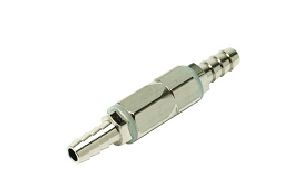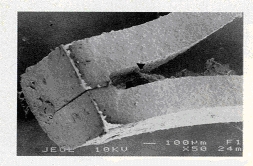Check Valve Retraction
Today, Penny, from Dr. Tim Flor’s office in Waseca, told me that she attended a seminar where they suggested that all units be checked to make sure that the handpiece hoses have check valves installed to prevent retraction of liquids from the patients mouth.
Check valves do serve a purpose when they work. Check valves are designed to only permit the flow of air or water in one direction. There is normally a small arrow stamped on their exterior that indicates which way flow will be permitted. They are installed on each water bearing handpiece line within a delivery unit. Check valves are usually constructed of either a small piece of rubber tubing that is pinched flat on one end (A duckbill valve) or they are constructed using a small ball bearing, a spring, and an o-ring.

Penny wanted to know if I felt that it was necessary to have them inspected and to have new check valves installed. My thoughts on check valves are as follows:
PROS:
- Check valves do prevent backflow from the patient when they are working properly. This helps prevent additional bacteria contamination of the unit.
- They are necessary in some applications such as flush toggles on delivery units, or cavitron dual select devices that allow for selection of different medicaments.
CONS:
- The check valves tend to get a contamination within them that causes them to leak thus defeating their originally intended purpose.
- Check valves tend to clog preventing all flow of water to the handpiece.
- As they are “anti-retraction” devices, they tend to not allow the water to drawback upon termination of a foot pedal depress. This means that a small amount of water dribbles from the end of the handpiece everytime you stop.
- They really need to be checked every 6 months to see if they are retracting and should be replaced if they are.
Here is a picture from a microscope showing a check valve that has failed due to buildup of bacteria on the surfaces of the duck bill valve:

If you would like, we can check your delivery system handpiece hoses for retraction and offer suggestions. Check valves do work, but they do go bad and must be replaced regularly if you intend to reap the benefits that they provide. A strict regiment of waterline disinfectant use (such as Mint-A-Kleen) will help extend the life of your check valves.